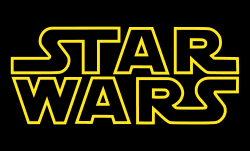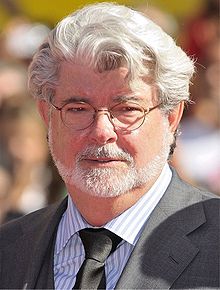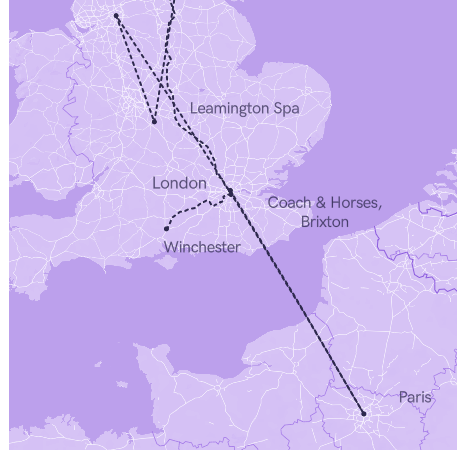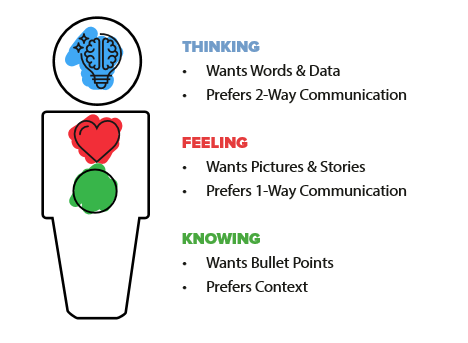Fans of my Monopoly Pub Crawl experience will know how much I value doing things in the correct order.
So what is the best order to watch the Star Wars films in? The obvious debate creates a battle between the ‘Release Order’ (Episodes IV – VI, then Episodes I – III) versus the ‘Lucas Order‘ (Episodes I – VI) – and having now completed both, I figure I’m well-placed to pass judgement.

Who am I to judge?
I want to clarify that I am, and so I write, from a position outside of great Star Wars fandom. I didn’t grow up with these movies – in fact, I didn’t watch the originals until the remastered versions were released while I was in high school (my friend Brendan reminded me recently that not having watched Star Wars was “like saying I had never walked through a door”; he’s of the belief most functioning humans exit the womb with a working knowledge of at least the original trilogy).
When Episode III was released in 2005, I binge-watched all 6 in the Release Order – watching the Original Trilogy and the Prequels over the course of a few days. Preparing for Episode VII in 2015, I did the same in the Lucas Order.
But I didn’t watch them in between, I believe Jedi is a better movie than Empire, and it’s entirely possible I have never seen a version where Han shot first. I write in the context of a casual fan (albeit with relevant Guinness World Record credentials). So what is the best order to watch the Star Wars films in?
Release Order
The saying goes that if you like the Ewoks you must have been born after May 25, 1973, and if you like Jar Jar Binks you must have been born after May 19, 1992. The latter date probably separates those of us originalists who think Release Order is the ‘obvious’ order, from those for whom it makes no sense (seriously – would you ever tell someone to start with Season 3 of Six Feet Under, or binge watch James Bond starting with Timothy Dalton in the role?).
Watching in 2005 culminating in Episode III, the Release Order was the obvious order. And it has its merits – knowing the twists and turns of the better, original trilogy allows the viewer to better enjoy the setup created in Episodes I-III.
And this order really does end well. The hope in Uncle Owen and Aunt Beru, holding baby Luke as the twin suns set on Tatooine, nicely captures the despair and uncertainty of those times while foreshadowing the drama and resolution (that we know) is ahead.
Many key moments and spoilers are maintained here – the key ones being Vader as Luke’s father, Yoda being a weird and knobbly green creature, and Luke and Leia being siblings. Senator Palpatine being the Emperor, however, is ruined – while much of the prequels is of necessity ruined by this viewing order (the climatic Episode III battles are a montage of Yoda v Palpatine and Annikin v Obi-Wan, when we KNOW all four of them survive), having the machinations of the Senate and Republic-cum-Empire mapped so obviously from Episode I is a disappointment.
Of course, if I wanted to list all the disappointments of the prequels this would be a seemingly infinite article. And their shortcomings have no doubt been well-documented by those with more knowledge and passion than I. Which is a shame – with more appreciation of the value of nuance, the tale could have been so much better.
Lucas Order

The pitfalls of this order are obvious – starting on a weak note with The Phantom Menace and then, well, maintaining consistent mediocrity for a lot longer. And they really do feel loooong – there really isn’t an engaging sense of purpose starting from here; as others have noted, the Lucas Order sets these six films up as Anakin’s story… but they really aren’t. As a character he is far too emotionally frail, succumbs too quickly, and is redeemed only suddenly and briefly at the end.
Given how well I thought Episode III set-up Episode IV when completing the Release Order, I was really looking forward to testing them in the Lucas Order.
And look, it actually does work. The story flows from III to IV smoothly and, as could be expected given the critical (and fan) ratings of each movie, picks up momentum. (I’ll touch on this more when I introduce Episode VII below.)
This transition from the Prequels to the Original Trilogy does work better for some characters than for others. Chewbacca is the best example of this – in Release Order he’s Han Solo’s quiet but strong sidekick, reflecting the loyal dog that Lucas based him on, and then he merits one cute mention from Yoda at the end of Episode III. In Lucas Order, this changed for me dramatically – Chewbacca is introduced in Episode III as a loyal friend of Yoda, who fought beside him and helped rescue him when the Clones turned. In the later films, we can see in him some fear and uncertainty – what desperation saw him evacuate his home system to become a smuggler’s offsider? how does he feel when Obi Wan and Luke show up in the bar? At what point must he want to declare “I believe in the force! I trust you!” while being held back by concern born out of that war and the subsequent decades? Admittedly, we are projecting this onto him, and to a lesser extent the other non-English speaking characters (R2-D2 and Jabba) who knew / interacted with Anakin but never bother to mention this after the end of the Clone Wars.
The transition does not work so well for other characters. Darth Vadar in particular is changed from the looming and impenetrable ‘great evil’ to moody Hayden Christensen in a costume. Palpatine does nicely, though it’s not clear what he was doing in absentia throughout Episode IV. Some of the back stories just don’t compute for my sense of film – Anakin as C3PO’s maker being the most obvious failure in this regard.
But overall, I cannot recommend this order, simple as it may be (and obvious for future generations). If I had to summarise the Lucas Order, it would be thus: 6 hours of whiny Anakin are immediately followed by 4 hours of whiny Luke.
The Lucas Order: 6 hours of whiny Anakin immediately followed by 4 hours of whiny Luke
And that’s why it feels so long. Anakin’s story ark is weak. And while the parallel’s with his son’s are there, watching in this order just serves to make Luke irritating. And so much of the double exposition (explaining the Force to the too-old-to-train-bastard-from-Tattooine and then later explaining the Force to the too-old-to-train-orphan-from-Tattooine) adds run time without pleasure. We now know the identity of the pervy dude standing beside Obi Wan and Yoda at the end of Jedi, but we no longer care.
Watching the Star Wars saga in the Lucas Order is not a pleasurable experience. Given the choice of Release Order or Lucas Order, I must recommend watching these in Release Order.
Machete Order
But now there’s a third option! Actually, it’s been around for a few years and is known (based on the title of Rob Hilton’s blog, rather than some much cooler reasoning) as the Machete Order.
The Machete Order runs:
- Episode IV
- Episode V
- Episode II
- Episode III
- Episode VI
All of the wonderful reasoning can be found on Rob’s blog here.
The basics are that we now start and end on a strong movie; that none of the spoilers I outlined above (father, Yoda, siblings, Palpatine) are ruined (and some are enhanced); plus nothing of importance to the subsequent stories actually happens in Episode I, so removing it entirely has no downside and much (Jar Jar who?) upside.
I read about this while completing the Lucas Order, so had a chance to reflect upon it. And I must say – next time I go for a Star Wars binge, this is the order I will be trying. Since they don’t work as Anakin’s story, this order reverts it back to being Luke’s story – plus an extended flashback that explains much AND better sets the audience up for Luke’s dilemma with the Emperor.
Given the limitations raised by both my earlier options, the Machete Order is now the one I shall recommend.
What Impact does Episode VII have on this? Episode VII? Episode IX?
I wrote the above before viewing Episode VII (The Force Awakens), and am pleased to report that the new trilogy (so far) doesn’t seem to impact the above choice in any way.
While the transition from Episode III to Episode IV was tight, and largely worked well from a narrative perspective in both the Release Order and the Lucas Order, the transition from Episode VI to Episode VII is much looser. Indeed, among many criticisms of the new film, my main gripe with The Force Awakens is how unclearly it connects with the earlier film. We are propelled from scenes of celebration across the ‘new’ Republic (liberated from the Empire by the death of Palpatine and Vadar on the second Death Star) into a universe that feels very much like the one we saw at the start of Episode IV. For no apparent reason.
Indeed, were it not for the character winks to camera throughout, you could probably skip the story from Episode III to Episode VII with minimal disruption. Change a few names, and nobody would notice (I’m surely not the first to observe that The Force Awakens is to A New Hope what Bridget Jones’ Diary was to Pride and Prejudice).
But this means there’s no impetus to watch Episodes VI and VII directly after each other. If you stick with the Release Order, you’ll be fine. Don’t feel compelled to do the Lucas Order. And if you give the Machete Order a try, let me know how you go – there’s every chance I won’t try it out until Episode IX is released on 24 May, 2019.
If you’re Dustin Curtis, you should follow me on Twitter here.
And please tell your friends: Sharing is Caring
Thanks for reading!




